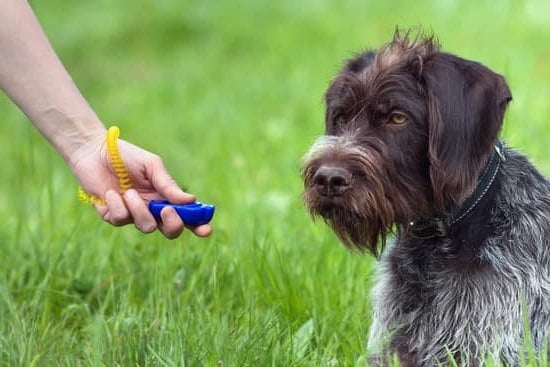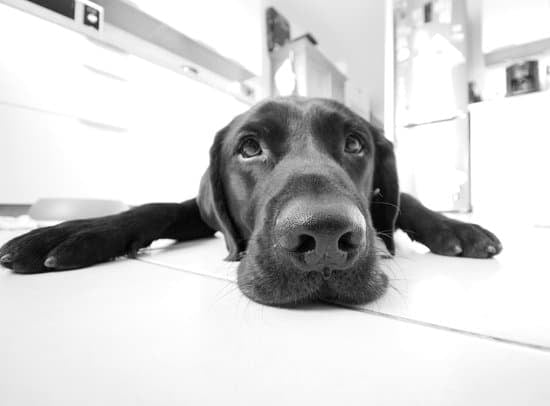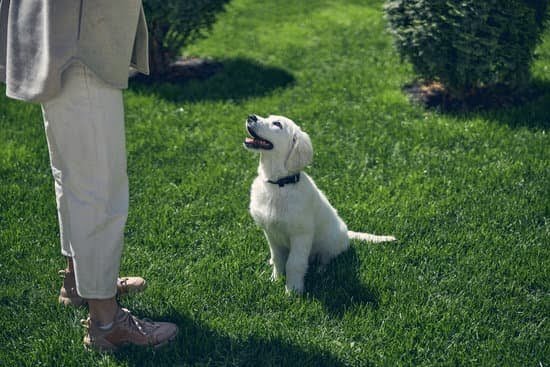Introduction
Potty training is an important step when it comes to taking care of our canine companions. Teaching a pup or an older dog where and when to use the bathroom helps keep your home clean, keeps your pet safe from potential hazards (like spilled cleaners or electric cords), and can lead to a healthier and more enjoyable relationship between you and your pup. Knowing when your dog is potty trained is essential in evaluating the success of this process. Below we will discuss how you can assess how well potty training is going with your pup.
Things To Look For:
1. Accidents Decrease – If accidents happen less regularly then this is a great sign that their potty training efforts have paid off. Keep track of how many accidents occur so that over time you can reference back for progress made on potty training.
2. Signs of Urination/Defecation Are Caught Quicker – A key indicator that your pup understands where they should go to use the restroom is when they begin giving signs that they need to go out such as pacing, sniffing, scratching at the door, circling or making noise. Keeping track of when these activities start can give you an idea of whether potty training is going according to plan.
3. Your Dog Complies When You Take Them Out – If your pup responds promptly to commands like “outside” or “go pee,” then this could indicate they understand the command and are comfortable with it being routine behavior that has been established through consistent practice during potty training sessions.
Conclusion:
At least four weeks of consistent effort should be put into potty training before calling it quits on whether it was successful or not, but looking for signs mentioned above can help gauge progress toward successfully toilet-training your pup! That said, if these markers remain lacking after consistent attempts, contact a trainer for advice on further steps for helping with toilet-training.
Setting Expectations
It is important to have realistic expectations when potty training your dog. Generally, puppies can achieve 90% of the potty training process within four to six months. Their progress will depend on consistency and dedication of their owners in using the same methods for potty training. During that time, it is not unusual for accidents or relapses to occur which should be expected.
Once your pup is able to understand the association between going outside and eliminating waste, they are well on their way towards being potty trained! Potty trained dogs should be able to go a certain amount of time without having an accident during the given period(s). A good basic rule of thumb is that dogs older than six months should be able to wait up to five hours before they need a break outside. If your pup is able to hold their bladder over nine hours then you can definitely consider them as housebroken and 100% potty-trained!
When evaluating whether or not your pup has reached success with their potty-training regimen, other signs you can look for include: regularly alerting humans when they need to go out (e.g., scratching at doors) and becoming very excited when getting ready for an outdoors bathroom break. When these behaviors become consistent it’s easy to see how valuable proper potty training can be!
Identifying the Signs of Potty Training Readiness
Knowing when your dog is ready to be potty trained is an important part of the process. Some dogs may train quickly and easily, while others may take longer. To know for sure if your pup is prepared for potty training, look for the following signs:
1. Your dog takes frequent trips outside or makes it known that they need to go out. This could include barking, whining, scratching at a door or standing in front of their designated spot.
2. Your pup has begun understanding which areas of the house are designated as “off-limits” for pottying and uses them only when and where dedicated bathroom spots exist outdoors.
3. Your pup shows excitement when dragged on a leash to the designated bathroom spot. This typically involves wagging their tail or expressing general enthusiasm about going for a walk or being outside in the elements.
4. When you return home from a period away (e.g., workday or outing), your dog has not had any accidents in the house that required cleaning up.
Establishing Clear House Rules
To ensure that your dog is potty-trained, you must discuss and establish clear house rules with your family. Have a conversation about which areas to avoid as bathrooms for your pet. For example, you may decide to always keep your pet away from the carpeted rooms like the living room or bedroom. Make sure everyone in the home follows these rules consistently. Use words like “outside” or “potty” when it is time for your pet to go outdoors and use those same words whenever you catch him inside the house.
In addition, provide plenty of opportunities to take your pet outside throughout the day in order for him to gain bladder control. Let him stay outside long enough for him to listen for cues and signals that he can “go” outdoors instead of inside the house. Offer treats immediately after those successful attempts on outdoors bathroom activities. Be sure to closely monitor the activity occurring inside the home and be ready to respond quickly should an accident occur. Lastly, reward desired behavior with praise each time they do something right so they can continuously learn what is expected of them in order to become fully potty-trained.
Introducing Potty Protocols to Your Pet
Potty training is a crucial step in owning a happy, healthy pet. The earlier you start potty-training your dog, the easier it will be. To know when your dog is ready to be considered potty trained and safe in the home, there are some protocols you should follow before introducing them to the household.
The first step would be to set up a schedule for your pet’s potty times. You’ll want to establish regular bathroom breaks every few hours during the day as well as during nighttime. You may need to tweak or adjust the amount of time between bathroom breaks depending on how quickly they learn and develop habits, such as if they need to go more or less frequently than what you initially planned out. Once they become accustomed to having trips outside at designated times, this will help them form the habit of going when needed without incident.
Next, you’ll want to mark progress using positive reinforcement methods, such as praising and rewarding your pet with treats or toys when they go outside where you’ve asked them too or if they use their designated potty area inside (if permitted). This reinforcement will encourage good behavior in order for them to understand what needs to be done when it’s time to “go” in order keep both themselves and their environment clean and comfortable.
Lastly, it’s incredibly important that all members of your family stick to the same rules when it comes time train your four-legged friend; each person should have consistent communication with commands that allow your pet an opportunity either successfully complete or mess up the task at hand (in this case – going where he/she needs too). If everyone abides by these regulations provided with consistency, then you can assume your pup has been “potty-trained” when he/she starts anticipating trips outside or triggering themselves when it’s gotten too long since their last one!
Implementing Positive Reinforcement Techniques
One of the most effective ways to potty train a dog is through positive reinforcement techniques. Positive reinforcement involves rewarding your pup for good behavior, and in this case, it is when they go potty in the right place. After each successful bathroom trip outdoors give your pup a reward, like a treat or verbal praise and encouragement. Repetition and consistency are key when instilling new habits; so make sure you repeat this routine every single time until the pup starts to understand that ‘outdoor’ means business time. In addition to giving rewards for successful trips outdoors, if you catch your dog doing his business indoors, try not to scold him or yell at him; instead redirect him outside calmly and patiently. This will teach him that being outside is what you want from him, rather than associating aggression with going potty in the wrong spot. After following these positive reinforcement steps consistently, you should begin to see progress with potty training. You’ll know your pup is 100% trained when he no longer has accidents indoors and goes outdoors all on his own without prompting from anyone else!
Tracking Your Pet’s Potty Training Progress
To gauge your pet’s progress with potty training, you should begin by establishing a consistent routine. Take your pup outside at the same times each day, usually first thing in the morning and then at regular intervals throughout the day. During these times, bring lots of treats and positive reinforcement when they do their business outdoors. Begin tracking your pet’s restroom habits on a chart conveniently located in the kitchen or near their bathroom area. Make note of when they used the restroom outdoors and indoor accidents they may have had. Over time you will begin to recognize patterns that can help you better plan their potty times or adjust that parts of their routine to avoid accidents.
Having an established routine is not enough though, as there are specific signs that indicate if a dog is potty trained or not. First, how often are you seeing them leave puddles indoors? If those types of accidents rarely happen, it’s likely they understand what’s expected of them without fail now — assuming they are healthy. You may also want to pay attention to how long it takes for them to take care of business once outside too; potty training should result in your pup doing its duty much more quickly than before. If your dog seems unable to hold its bladder for extended periods of time then it perhaps hasn’t been made aware that potty time isn’t appropriate for random places like inside any longer. Finally, you always want to check with how reliable they seem when responding or when asked to go outside as this indicates whether or not they understand what needs done and why!
Prevent Accidents By Regularly Checking For Relapses
It is important to regularly check your dog’s progress while potty training. This means monitoring their bathroom habits to make sure they are not having any accidents in the house. One of the best indicators that your pup is potty trained is if they alert you when they need to go outside. If your dog barks, scratches at the door or shows some other type of behavior signaling that they need to go outside, this is a good sign that they know when it’s time to go outdoors and eliminate. You can also look for signs of success as well – such as when your pup “goes” outside on command or shows no interest in eliminating indoors. Lastly, eliminate any triggers which may cause an accident. This could include leaving food or waste near the entryway or providing too much access inside the home during potty training as this may lead to confusion and regressions. Overall, by properly monitoring your pup’s progress, you will soon be able to confidently let them freely roam throughout the house without fear of any accidents occurring!
Getting Professional Assistance and Support Where Needed
If your dog is not potty training as expected and you find yourself frustrated, it’s a good idea to seek professional help and support. Talk to your veterinarian or reach out to a canine behaviorist who specializes in house-training methods and they can help guide you on the best path forward. They may also be able to answer any additional questions you have about the process and provide an evaluation of your individual pup. This added guidance can make all the difference in becoming successful at potty training your canine companion.
Taking the Next Steps
Determining when your dog is potty trained can be tricky. Although the time frame varies for every pup, there are some common signs that indicate that your pet has been adequately trained. To know if your dog is successfully potty trained, watch for the following telltale signs:
1. Reduced Accidents: After a significant period of potty training, you should notice decreased accidents throughout the day. If a few months have gone by and your pup is still having regular accidents in the house then you may need to adjust your strategies or schedule.
2. Control over Urination: Signs of potty training success include improved ability to hold their urine or defecation indoors until it is appropriate to go outside. If it appears as if your pup needs to let out a pee urgently but leaps onto the door handle with urgency or looks for other exits in anticipation of going outdoors then you know that they understand the concept of controlling their urge to eliminate at home.
3. Cue Response: A highly trained pup should respond with understanding when given specific vocal cues or commands like “Go Potty” before being taken out for an elimination walk. If this method has been consistently used over time and results in successful elimination outside then it’s likely that your pet understands its cue and further indicates potty training progress has been achieved.
4. Frequency: Generally speaking, over-time most puppies will learn to ‘hold it’ longer during the night and maintain control at least until gone taken out in the morning hours – usually around 8-10 hours of sleep without accident indicates successful potty training progress was made., as well as control after drinking large quantities of water or eating meals throughout the day.. Increased periods between extended rests without accident may also indicate successful results have been reached (i.e., slightly longer periods between nighttime sleep schedules).
Conclusion
Once your pup has gotten into a regular potty training routine, it is important to be aware of the signs that they have become successfully house trained. One obvious sign is that they consistently go out to use the bathroom in the designated area. When first starting out, it can be helpful to take them out multiple times throughout the day and accompany them while they go. Additionally, if there haven’t been any mistakes indoors in over a month or two, this suggests your pup has learned where and when they need to eliminate.
Considering that accidents are part of any learning process, try not to get angry if one does happen – instead, respond calmly and bring them back outside once more. Once you notice fewer indoor accidents and observe your dog exhibiting an increased toileting schedule outside during their designated potty hours, congratulations: you two have succeeded at mastering how to know when your dog is potty trained!
Having an attentive eye for observing signals from your pet will only make being a successful pet owner much easier. Your established relationship with your furry friend will help set expectations for both of you as far as potty training success goes over time. Keeping an open line of communication with your pup by adjusting their training habits based on their reactions will ensure proper understanding between both parties and pave the way just right for happy days ahead spent together!

Welcome to the blog! I am a professional dog trainer and have been working with dogs for many years. In this blog, I will be discussing various topics related to dog training, including tips, tricks, and advice. I hope you find this information helpful and informative. Thanks for reading!





